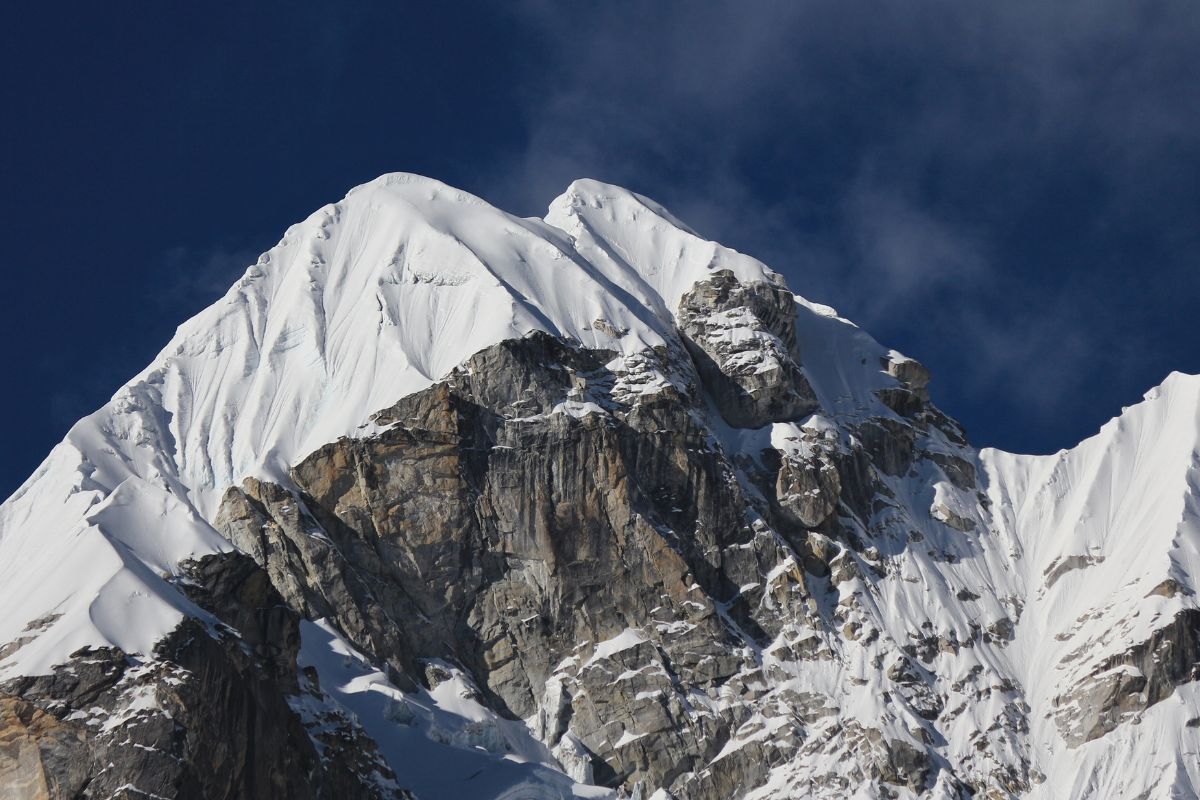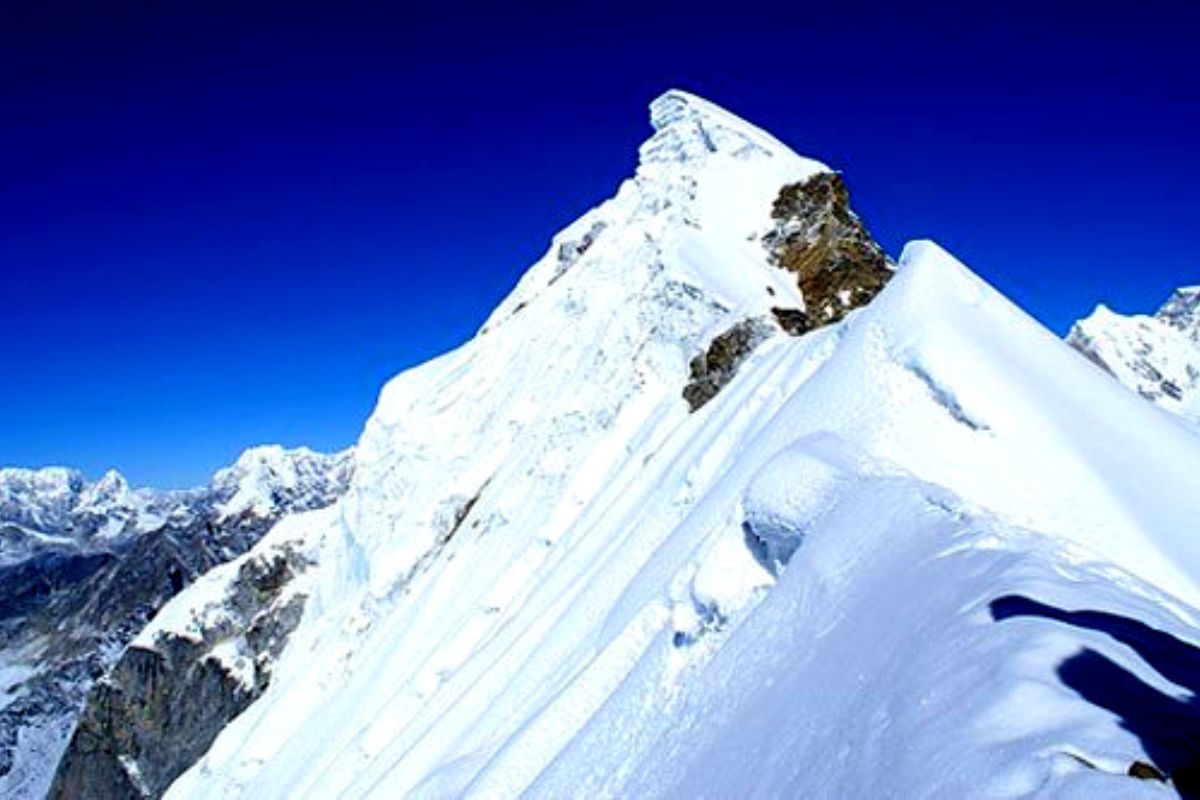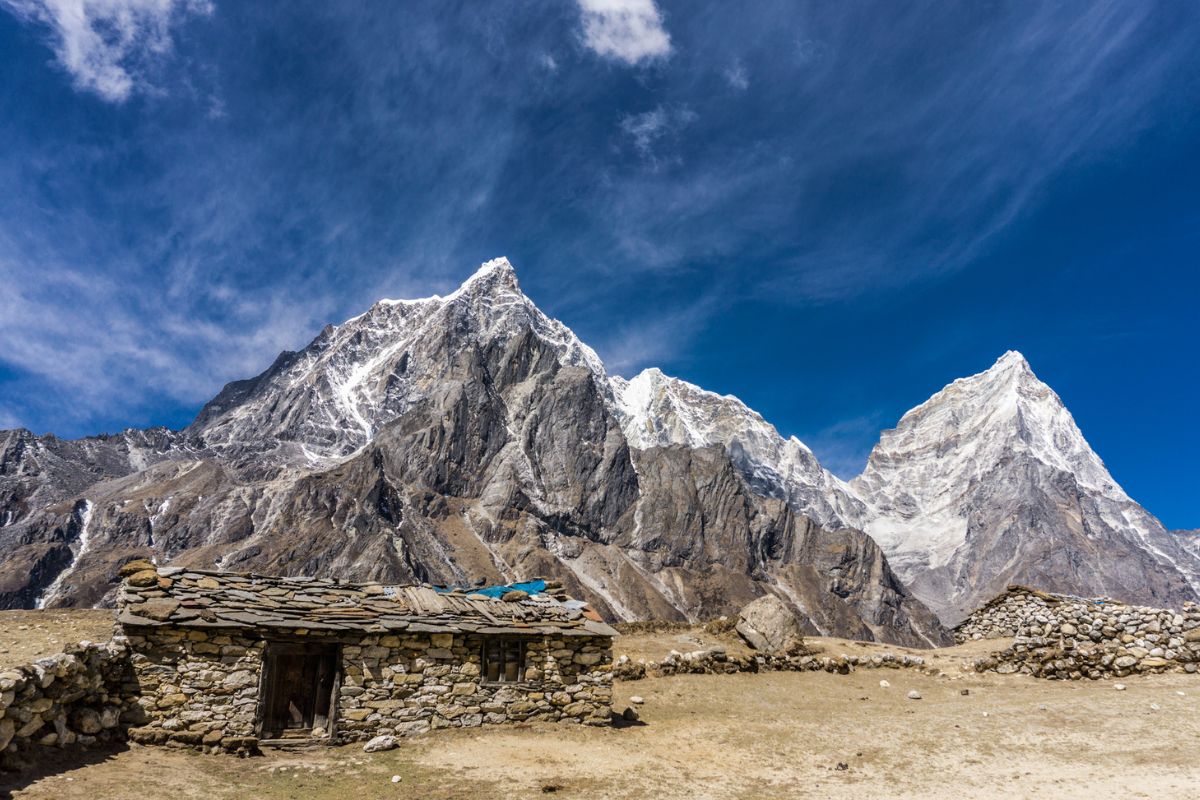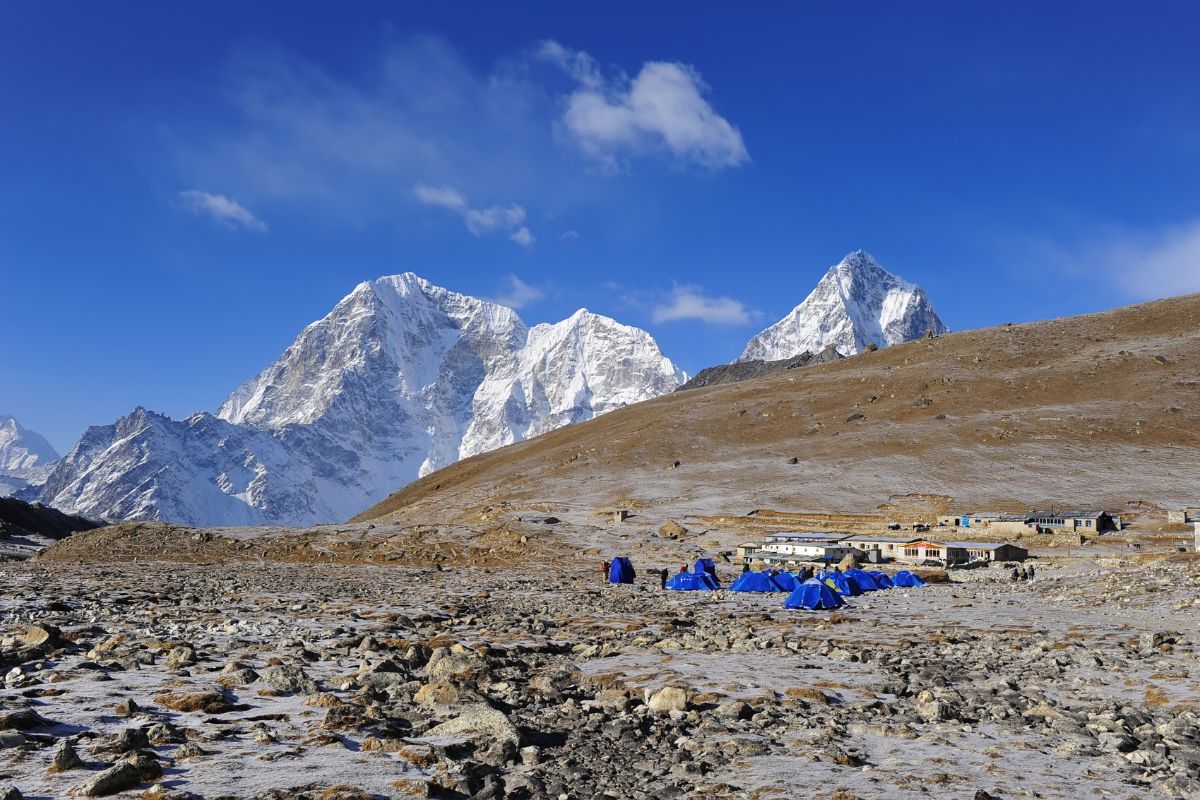
Climbing Lobuche Peak: Difficulty And Best Time

Climbing Lobuche Peak: Difficulty And Best Time
swotah travel
3860
29, 12 2022
Mountain climbing has been a global adventure in recent times. From Andes Mountain to the Himalayas of Nepal, the adventure remains a sport for many mountaineering personnel. Nepal is home to numerous mountains and peaks that have been the destination of thousands of climbers throughout the decade. And Lobuche Peak is one of them.
Lobuche Peak is a mountain in the Himalayas of Nepal. It is located in the Solu-Khumbu region of Nepal, near Mount Everest. The peak is a popular destination for mountain climbers and trekkers.
There are two distinct peaks of Lobuche: Lobuche East and Lobuche West. Lobuche East is a challenging mountain with a difficult technical route to the summit - it stands at 6,119 meters (20,075 feet) above sea level. On the other hand, Lobuche West is a slightly easier climb and stands at an elevation of 6,145 meters (20,161 feet).
Both peaks of Lobuche offer stunning views of the surrounding mountain ranges, including Mount Everest, Lhotse, Nuptse, and Pumori. The region around Lobuche is also home to various flora and fauna, including rhododendron forests, yaks, and Himalayan tahr.
Climbing Lobuche Peak requires a high level of physical fitness and mountaineering skills. It is recommended that climbers hire a local guide and use proper equipment, such as crampons, ice axes, and helmets, to ensure a safe and successful climb. We will discuss the difficulty and the best time to climb this mountain. Hang up until the last of this feature article.

Difficulty In Climbing Lobuche Peak
Lobuche Peak is a mountain in the Himalayas of eastern Nepal, located near the Khumbu region. It is a popular climbing destination for mountaineers, and the route to the summit involves technical climbing skills, physical endurance, and high-altitude acclimatization.
The difficulty of climbing Lobuche Peak depends on the route and the conditions. The summit has two main routes: the standard and the southeast ridge. The standard way involves climbing a long snow slope to reach the summit, while the southeast ridge involves more technical climbing on rock and ice. Both routes require crampons, ice axes, and other specialized climbing equipment.
The climb's difficulty is also influenced by factors such as the weather, snow conditions, and the climber's level of physical fitness and acclimatization. Altitude sickness is a significant concern on Lobuche Peak, as the summit reaches 6,119 meters (20,075 feet). Proper acclimatization and careful planning are necessary to minimize the risk of altitude sickness.
In summary, climbing Lobuche Peak is a challenging undertaking that requires technical climbing skills, physical endurance, and high-altitude acclimatization. It is recommended for experienced climbers with good physical condition and the necessary equipment and resources.
Here are some of the listed challenges of climbing Lobuche Peak:
# Steep Landscape: If you ascend from Lobuche village, you will have to go through the steep and rocky landscapes. You may find your hike to Lobuche Base Camp tiresome and hectic.
# Slippery High Camp Routes: When you reach the High Base Camp at Lobuche, you will be welcomed by some of the slippery routes. If you are not an active climber or it is your first time, you will find it tough to get through the ways.
# High Altitude: High altitude is an issue for all mountains. East and West peaks sit above the altitude of 6000 meters, enhancing the cold temperature, dynamic weather, and heavy snowfall during the winter season. The air is thin at these altitudes, which can lead to difficulty breathing. Similarly, the extreme cold can result in frostbiting, and many climbers also suffer from altitude sickness.

Best Time to Climb Lobuche Peak
The best time to climb Lobuche Peak depends on several factors, including your preferences and abilities, the weather and conditions on the mountain, and the availability of support services such as guides and porters. In general, the climbing season for Lobuche Peak runs from September to November and from March to May. These months offer the best combination of good weather and stable conditions on the mountain.
September to November is the traditional climbing season in Nepal, and this is when most people attempt to climb Lobuche Peak. The weather is typically straightforward and dry during this time, with little chance of rain or snow. However, it can get quite cold at higher altitudes, so it's essential to bring warm clothing and equipment.
March to May is also an excellent time to climb Lobuche Peak, as the weather is typically warmer and more stable than in the winter months. However, this is also the peak tourist season in Nepal, so you may have to deal with larger crowds on the mountain and in the base camps.
Regardless of when you climb Lobuche Peak, it's essential to be well-prepared and acclimatize to the altitude gradually to reduce your risk of altitude sickness. Hiring a reputable guide or trekking agency is also an excellent idea to help you plan and execute your trip safely.
Preparation and Safety Guidelines To Climb Lobuche Peak
Climbing Lobuche peak is a challenging and physically demanding activity that requires proper preparation and safety measures. Here are some guidelines to help you prepare and stay safe while climbing Lobuche peak:
Physical Conditioning: It is essential to be in good physical shape before climbing Lobuche peak. This will help you handle the climb's physical demands better and increase your chances of success.
Proper Gear: Ensure you have the proper climbing gear, including appropriate clothing, footwear, and equipment such as crampons, an ice axe, and a climbing helmet.
Acclimatization: Altitude sickness can be a severe issue when climbing high peaks. It is essential to allow your body time to acclimatize to the altitude by climbing slowly and spending extra time at lower elevations.
Know Your Limits: Don't push yourself beyond your limits. It is essential to listen to your body and take breaks as needed.
Hire A Guide: Consider hiring a local guide familiar with the route who can provide valuable guidance and support during the climb.
Stay Hydrated: Dehydration can be a severe issue at high elevations. Make sure to stay hydrated, drink plenty of water, and avoid alcohol while climbing.
Follow Safety Guidelines: Always follow the safety guidelines provided by your guide and take extra precautions to protect yourself from hazards such as rockfalls and avalanches.
Following these guidelines and being prepared can increase your chances of a successful and safe climb of Lobuche peak.

What to Prepare for Attempting Lobuche Peak?
If you plan to attempt Lobuche Peak, physical and mental energy is a must while preparing for the challenges of high-altitude mountain climbing. Here are some things you should consider preparing:
Physical Fitness: Lobuche Peak is a physically demanding climb requiring a high physical fitness level. You should be in good shape and able to hike for long periods carrying a heavy backpack.
Altitude Training: If you are not accustomed to high altitudes, you must train your body to acclimate to the thin air at high elevations. This can be done by gradually increasing the altitude of your training hikes or by using a hypoxic (low oxygen) chamber.
Clothing and Gear: It is essential to have the proper clothing and gear for the climb. This includes warm, insulated layers for the cold temperatures at high altitudes, a good quality climbing suit, boots, gloves, and a hat. You should also bring a backpack with all the necessary equipment, such as a climbing harness, carabiners, and a helmet.
Mental Preparation: High-altitude mountain climbing can be physically and mentally challenging. Being mentally prepared for the challenges you may face during the climb is important. This includes being able to cope with the physical demands of the climb, as well as being able to handle the mental stress that can come with being in a high-stress environment.
Hiring a professional guide or joining a guided climbing group for your attempt on Lobuche Peak is highly recommended. A professional guide will have the necessary knowledge, experience, and equipment to ensure a safe and successful climb.
So, if you are planning to climb Mount Lobuche, you must first know that it is not everyone's cup of tea since it not only offers you the good side of natural beauty but also shows you some of the riskiest routes and landscapes.
Staining stamina, energy, and endurance will probably help you reach this peak. So, if you're planning on joining the expedition, contact us - we could help you plan the proper strategy for the peak of Lobuche.
NEWSLETTER SIGNUP
Sign up to receive our trip ideas and travel offers!
Get updates and Exclusive Offers up to 20% Discount








